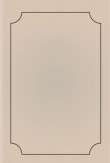قراءة كتاب Two Centuries of Costume in America, Volume 1 (1620-1820)
تنويه: تعرض هنا نبذة من اول ١٠ صفحات فقط من الكتاب الالكتروني، لقراءة الكتاب كاملا اضغط على الزر “اشتر الآن"

Two Centuries of Costume in America, Volume 1 (1620-1820)
Carroll with the brocade silk sacque. They are embroidered in the colors of the brocade.
Owned by author.
CHAPTER I
APPAREL OF THE PURITAN AND PILGRIM FATHERS
"Deep-skirted doublets, puritanic capes
Which now would render men like upright apes
Was comelier wear, our wiser fathers thought
Than the cast fashions from all Europe brought"
--"New England's Crisis," BENJAMIN TOMPSON, 1675.
"I am neither Niggard nor Cynic to the due Bravery of the true Gentry."
--"The simple Cobbler of Agawam," J. WARD, 1713.
"Never was it happier in England than when an Englishman was known abroad by his own cloth; and contented himself at home with his fine russet carsey hosen, and a warm slop; his coat, gown, and cloak of brown, blue or putre, with some pretty furnishings of velvet or fur, and a doublet of sad-tawnie or black velvet or comely silk, without such cuts and gawrish colours as are worn in these dayes by those who think themselves the gayest men when they have most diversities of jagges and changes of colours."
--"Chronicles," HOLINSHED, 1578.
CHAPTER I
APPAREL OF THE PURITAN AND PILGRIM FATHERS
 t is difficult to discover the reasons, to trace the influences which have resulted in the production in the modern mind of that composite figure which serves to the everyday reader, the heedless observer, as the counterfeit presentment of the New England colonist,--the Boston Puritan or Plymouth Pilgrim. We have a very respectable notion, a fairly true picture, of Dutch patroon, Pennsylvania Quaker, and Virginia planter; but we see a very unreal New Englishman. This "gray old Gospeller, sour as midwinter," appears with goodwife or dame in the hastily drawn illustrations of our daily press; we find him outlined with greater care but equal inaccuracy in our choicer periodical literature; we have him depicted by artists in our handsome books and on the walls of our art museums; he is cut in stone and cast in bronze for our halls and parks; he is dressed by actors for a part in some historical play; he is furbished up with conglomerate and makeshift garments by enthusiastic and confident young folk in tableau and fancy-dress party; he is richly and amply attired by portly, self-satisfied members of our patriotic-hereditary societies; we constantly see these figures garbed in semblance in some details, yet never in verisimilitude as a whole figure.
t is difficult to discover the reasons, to trace the influences which have resulted in the production in the modern mind of that composite figure which serves to the everyday reader, the heedless observer, as the counterfeit presentment of the New England colonist,--the Boston Puritan or Plymouth Pilgrim. We have a very respectable notion, a fairly true picture, of Dutch patroon, Pennsylvania Quaker, and Virginia planter; but we see a very unreal New Englishman. This "gray old Gospeller, sour as midwinter," appears with goodwife or dame in the hastily drawn illustrations of our daily press; we find him outlined with greater care but equal inaccuracy in our choicer periodical literature; we have him depicted by artists in our handsome books and on the walls of our art museums; he is cut in stone and cast in bronze for our halls and parks; he is dressed by actors for a part in some historical play; he is furbished up with conglomerate and makeshift garments by enthusiastic and confident young folk in tableau and fancy-dress party; he is richly and amply attired by portly, self-satisfied members of our patriotic-hereditary societies; we constantly see these figures garbed in semblance in some details, yet never in verisimilitude as a whole figure.
We are wont to think of our Puritan forbears, indeed we are determined to think of them, garbed in sombre sad-colored garments, in a life devoid of color, warmth, or fragrance. But sad color was not dismal and dull save in name; it was brown in tone, and brown is warm, and being a primitive color is, like many primitive things, cheerful. Old England was garbed in hearty honest russet, even in the days of our colonization. Read the list of the garments of any master of the manor, of the honest English yeoman, of our own sturdy English emigrants from manor and farm in Suffolk and Essex. What did they wear across seas? What did they wear in the New World? What they wore in England, namely: Doublets of leathers, all brown in tint; breeches of various tanned skins and hides; untanned leather shoes; jerkins of "filomot" or "phillymort" (feuille morte), dead-leaf color; buff-coats of fine buff leather; tawny camlet cloaks and jackets of "du Boys" (which was wood color); russet hose; horseman's coats of tan-colored linsey-woolsey or homespun ginger-lyne or brown perpetuana; fawn-colored mandillions and deer-colored cassocks--all brown; and sometimes a hat of natural beaver. Here is a "falding" doublet of "treen color"--and what is treen but wooden and wood color is brown again.
It was a fitting dress for their conditions of life. The colonists lived close to nature--they touched the beginnings of things; and we are close to nature when all dress in russet. The homely "butternuts" of the Kentucky mountains express this; so too does khaki, a good, simple native dye and stuff; so eagerly welcomed, so closely cherished, as all good and primitive things should be.


